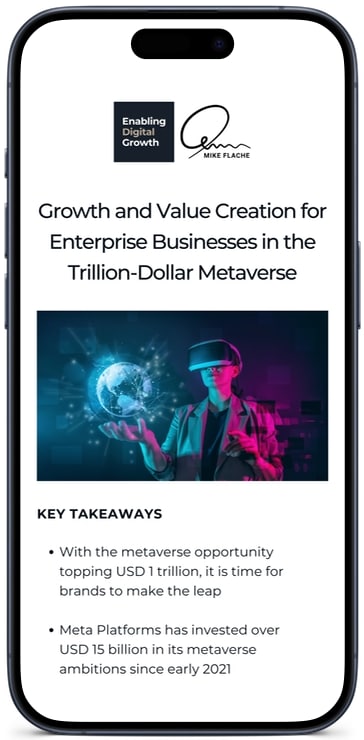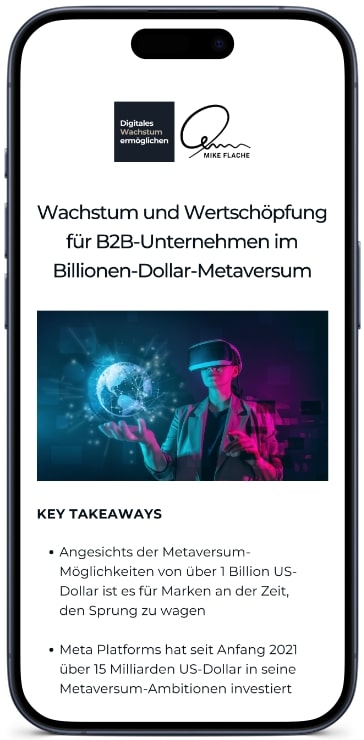More than any other region in our business world, Silicon Valley and Shenzhen are synonymous with one thing:
S P E E D !
It is an integral component of every business model, and the high-tech companies prove this over and over again. What can we learn from them for the digital transformation?
I first raised awareness of this a good five years ago in one of my articles with a view to digital transformation in traditional industries.
As far as Europe and especially the DACH region is concerned, I would like to do that again in 2022. Whether we like it or not, in our digital world there is still a risk for numerous companies to fall further behind.
Most of us are probably familiar with the most prominent examples, e.g. in the automotive industry or retail, from daily reports.
Secrets from Silicon Valley and Shenzhen
What is the essential secret of agile and fast-growing tech companies?
Their greatest motivation: taking their own “big idea” into the wide world and having a positive impact. This includes companies such as Flatiron Health in the healthcare sector as much as Hive Box, which operates the world’s largest express locker system. The list goes on and on.
Anyone who has experienced Silicon Valley or Shenzhen knows: despite their apparent restlessness, the various companies all have a relatively laid-back working atmosphere. Sounds heavenly, doesn’t it?
How do they do it?
The answers to that question are as varied as Silicon Valley or Shenzhen itself. And I’m not thinking about the fabulous leisure opportunities in these regions. I am talking about the cornucopia of ideas, visions, people, and cultures — their openness, mutual exchange, and the resulting spirit.
If you prefer facts: the people are either highly educated or brilliant autodidacts. They are confident and have an imperative focus on results. And, most importantly: they talk with each other openly.
New challenges, old problems
Sure, Silicon Valley or Shenzhen have their very own conditions. But, do they offer any insights that we can use for our digital transformation programs? Especially when it comes to initiatives in traditional sectors and industries?
It is worth approaching this question from another interesting angle:
Digitalization is not a challenge of the twenty-first century. Us humans have been engaging with this issue for 70 years already.
Stefan Fritz, Founder and CEO of synaix, has reviewed an interesting book on this topic: “Maschinendämmerung” by Thomas Rid. I always like recommending this article when it comes to digitalization.
We are, then, left with an intriguing question: have we made any progress in dealing with digitalization during those decades?
I believe that the answer is a resounding YES.
One particular image inevitably comes to mind, however: the vast majority of companies from traditional sectors and industries fail to take full advantage of the potential of digitalization. I would go as far as observing that they are trapped in a vicious cycle, at least in terms of the fast and successful implementation of new technologies.
Let me cite a few figures from the past years:
- In 2009, Thomas Pelkmann wrote an article about the Infas survey about IT change processes and transformation projects for SNP AG. The survey was distributed to IT managers and top executives from approximately 60 internationally active companies in Germany. The top executives concluded: transformation projects are too time-consuming.
- In 2012, Michael Bloch, Sven Blumberg and Jürgen Laartz of McKinsey & Company wrote an article about implementing IT-driven projects on time, on budget, and on value. They crucially noted that on average, projects of this kind exceed their budget by 45% and overrun their scheduled duration by 7%. These shortcomings combine with 56% less created value than predicted.
- In 2015, Mark Raskino and Graham Waller of Gartner published their book “Digital To The Core: Remastering Leadership For Your Industry, Your Enterprise, and Yourself”. It focuses on the digital transformation in the telecommunication sector. The conclusion sounds familiar: everyone is aware of the necessity of this transformation. But it takes too long, and – believe it or not – it is too disruptive.
- In 2020, BearingPoint’s CFO 4.0 study will see the light of day. It underlines that only 5 percent of German companies achieve the third and highest wave of digitalization in their CFO area. And only 10 percent of finance professionals spend their time on value-added services.
Even though these facts do not claim to be exhaustive, they are thought-provoking.
Digital transformation: combining the best of both worlds
Back to Silicon Valley and Shenzhen…
… and back to the question of what clues about the digital transformation of traditional sectors we can derive from the place.
One thing should be clear: our organizations need to be more agile!
And everyone needs to be willing to step off the beaten path.
I also believe that many companies are still structured in excessively traditional (and sometimes rigid) ways. This applies to their hierarchies, decision-making paths, and processes alike. Quite apart from the fact that a smartphone ban or blocked websites at the workplace are quite bizarre in the digital age.
In some companies, COVID-19 has not necessarily led to more flexibility on this point — unfortunately.
There should only be one “rigid” process: that of continuous change. Everything else simply fails to meet the rapidly changing requirements of the market, customers, and companies.
1. Feedback
One agile recipe for success that is embedded deep in the DNA of Silicon Valley is feedback. Not just internally from supervisors or colleagues, but also — and especially — from partners and customers.
2. Iteration
Another method is that of iteration. Admittedly, software developers adopted this approach long ago. But for the purpose of accelerating successful transformation projects, it is uncharted territory for many traditional sectors.
Put simply, feedback and iteration are concepts with one key objective: dividing a project into bite-sized chunks. The individual parts will be implemented with much greater agility and results are visible immediately. All involved parties become more motivated; risks, opportunities, and success scenarios become clear much faster.
This is what makes “quick wins” possible in the first place!
All of this may still be a novelty for some industries in Europe, especially the DACH region — even in 2022. After all, we are known for further developing our products or services to perfection. If possible, in a quiet little room before “it” is allowed to see the light of day.
Which, in the worst case — and this is not uncommon — completely misses the mark on the market and (potential) customers. From the engineer’s point of view, this means “frustration”. And “expensive” from the point of view of entrepreneurs, and shareholders. In one of my upcoming articles, I would like to show that it is finally worth rethinking.
An iterative approach and learning and designing in feedback systems have one overarching advantage for us entrepreneurs, executives and employees:
We get to tackle more tasks and implement them faster to advance the digital transformation of our organizations successfully




